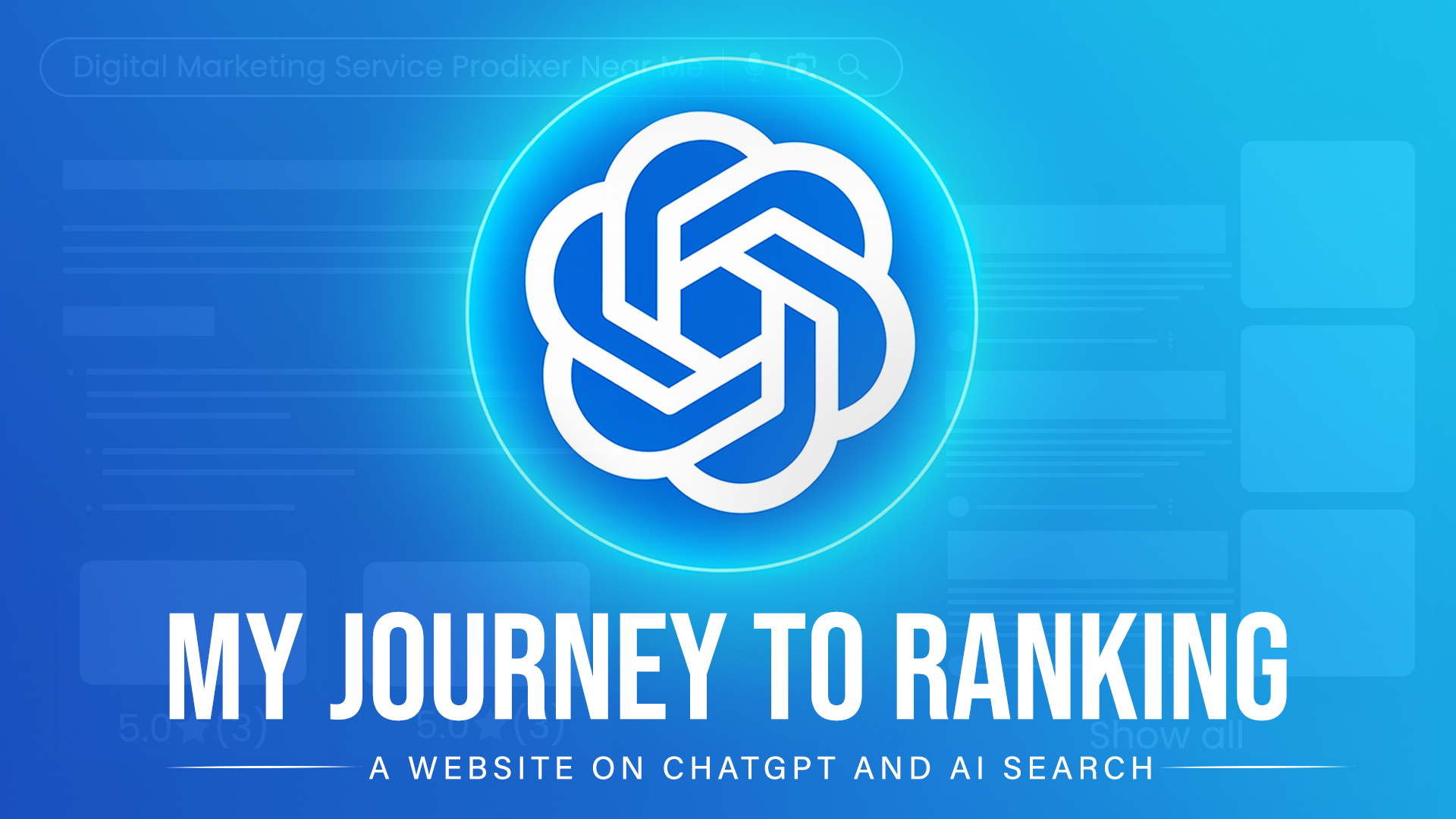- Admin
- September 8th, 2025
- 6 min Read
My Journey to Ranking a Website on ChatGPT and AI Search
When I first heard someone say, “You can actually rank your website on ChatGPT and AI search,” I thought it was just another buzzword trend. I had spent years working on traditional SEO — fighting for positions on Google, optimizing keywords, and building backlinks. But suddenly, the conversation shifted. People weren’t only typing their questions into Google anymore. They were asking ChatGPT, Perplexity, and Bing Copilot.
That’s when it hit me: if AI is the new search engine, then I need to adapt. And so began my journey into what I like to call ChatGPT SEO — optimizing my website so that it doesn’t just rank on Google, but also shows up in AI-powered answers.
Realizing the Shift in Search Behavior
I remember the first time I saw a friend ask ChatGPT for the “best event photographer in Perth.” Instead of scrolling through ten links, they got a clean, summarized answer in seconds. And I asked myself: “If my website isn’t part of that answer, am I even visible anymore?”
This was the turning point. I realized AI search ranking wasn’t optional — it was the future. If people are finding answers through AI, then I had to make sure my business was included in those answers.
Step 1: Learning How ChatGPT Reads the Web
At first, I thought ChatGPT had its own secret database. But then I learned something important: when it needs fresh or detailed information, it fetches data from the web. And just like Google, it looks at:
- Website authority and trust (EEAT: Experience, Expertise, Authoritativeness, Trustworthiness)
- SEO fundamentals like titles, meta descriptions, and keyword relevance
- Content clarity and formatting — structured answers are easier for AI to extract
- Accessibility — whether the site allows crawlers and has a sitemap
It was like déjà vu. The rules weren’t entirely new — they were just evolving.
Step 2: Making My Website Accessible to AI
The next step was about access. I realized if AI bots like ChatGPT’s crawler, GPTBot, couldn’t access my website, it was invisible. That meant updating my site settings, ensuring my sitemap was submitted, and double-checking that I wasn’t blocking these bots by mistake.
It felt like unlocking the front door of my website and putting up a big sign saying, “Yes, you’re welcome here.”
That small change made me confident that my site could now be discovered by AI crawlers.
Step 3: Writing Content Like I’m Answering a Friend
I used to write blog posts in long, formal paragraphs, stuffed with keywords. But ChatGPT doesn’t work that way. It prefers direct, conversational, and structured content.
So, I changed my approach. Now, I:
- Write clear headings (H1, H2, H3) so the content is easy to scan.
- Add FAQ-style sections with direct answers.
- Keep sentences short, crisp, and conversational.
- Use bullet points and tables for comparisons.
Example: Instead of a long paragraph about “AI SEO strategy,” I now write:
What is an AI SEO strategy?
An AI SEO strategy is optimizing your website so AI tools like ChatGPT and Bing Copilot can easily read, trust, and share your content. It includes:
- Allowing AI bots to crawl your site
- Writing structured, answer-focused content
- Submitting your sitemap to Google & Bing
- Building authority with backlinks
- Targeting featured snippets
Step 4: Submitting My Website to Search Engines
Another crucial part of my journey was registering my website in the right places. I signed up for:
- Google Search Console
- Bing Webmaster Tools
Here, I uploaded my sitemap.xml and verified ownership. It felt like enrolling my website into AI’s official directory. Once I did this, I started noticing faster indexing and better ChatGPT visibility.
Step 5: Aiming for Featured Snippets
Here’s a little secret I discovered: ChatGPT often pulls answers directly from Google featured snippets.
This was a lightbulb moment for me. If I could structure my content to appear in featured snippets, I had a higher chance of being cited by AI search too.
Example short definition:
AI search optimization is the process of making your website content easy for AI tools to read and trust, using structured answers, schema markup, and authority building.
Step 6: Building Authority (The Hard but Rewarding Part)
I won’t sugarcoat this part — building authority takes time. I started reaching out to industry blogs, sharing guest posts, and getting my business mentioned in local news articles.
I also made sure my business had strong local SEO signals — Google Business Profile, local citations, and consistent NAP.
Slowly, I saw the results. My content wasn’t just ranking on Google; it was being surfaced in AI-driven answers.
Step 7: Creating Content That Feels Human
The biggest lesson of all? AI loves human content.
Instead of robotic keyword-stuffed blogs, I now write in first person. I share my experiences, struggles, and wins. I explain concepts with real examples. And most importantly, I write to help people — not just to rank.
My Biggest Takeaway
ChatGPT SEO is not about gaming the system. It’s about clarity, trust, and accessibility.
When I made my website open to AI crawlers, structured my content like real answers, submitted my site to search engines, and built genuine authority, I noticed something amazing — my website started appearing not just in search results, but in AI-generated answers too.



